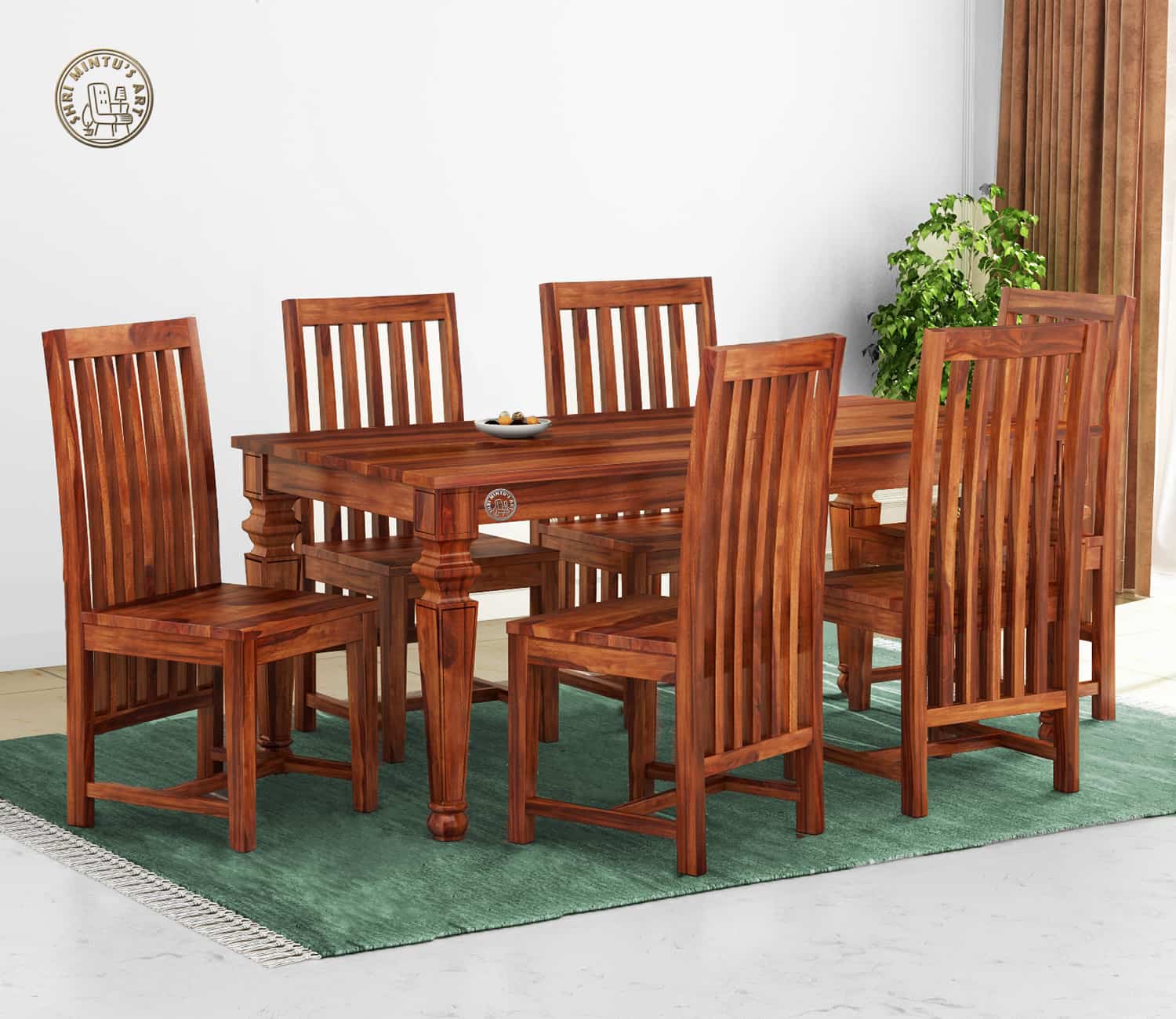Selecting the perfect dining table involves more than just aesthetics – it also considers comfort, size, and practicality. A key aspect that many people frequently neglect is the standard dining table height, size, and overall dimensions of dining tables. Whether you’re enhancing your existing setup or creating a new dining area, grasping the fundamentals can significantly impact the outcome.
In this guide, we will examine all you should understand regarding standard dining table height, dining table length, and how to choose the appropriate fit for your area – particularly if you’re looking for dining room table that seats 6.
Why Table Dimensions Matter
The size of a dining table affects not just how many individuals it can seat. A properly sized dining table provides comfort for guests, allows easy movement throughout the room, and matches the design aesthetics of the space.
If the table is overly small, the dining room may seem inadequate and imbalanced. On the other hand, if the table is excessively large, it can dominate the area, causing it to feel tight and suffocating.
Therefore, choosing the appropriate size is not just about arranging chairs around the table – it’s about creating an ambiance that exudes elegance and harmony.
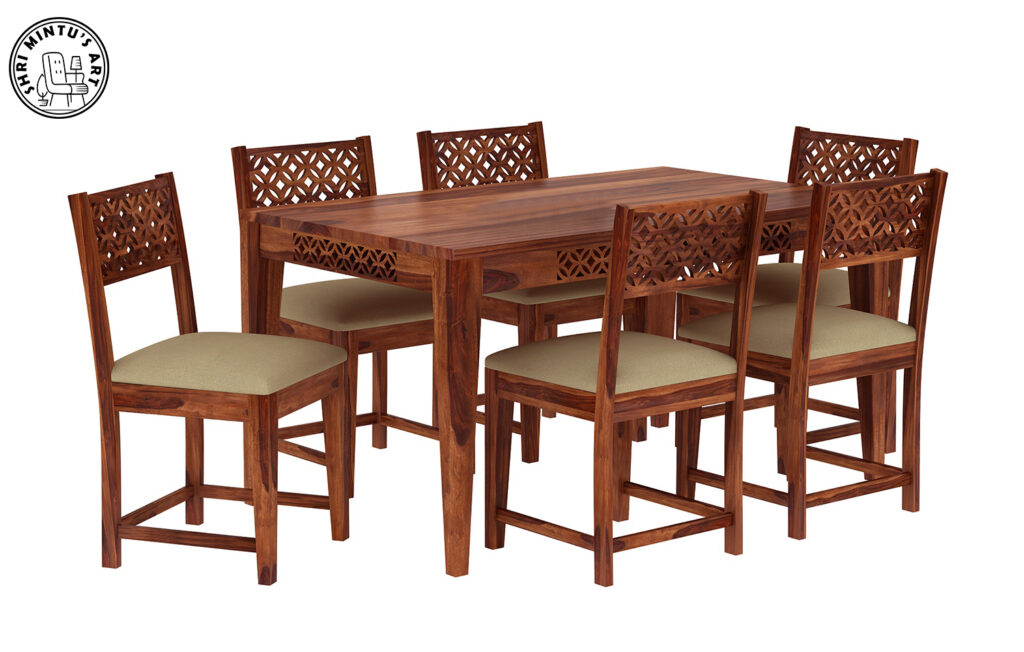
Things To Consider Before Choosing Your Table Size
Choosing the ideal dining table, dimensions is among the most important factors. It influences not just the number of individuals that can be accommodated but also how appropriately the table integrates and operates within your area. Here are the essential elements to think about prior to determining the table size:
Dimensions of the Room
The size of your dining space directly influences the table dimensions you can fit. Make sure there is a minimum of 36 inches (3 feet) of space on every side of the table to allow for pulling out chairs and moving easily. In tighter dining spaces, think about smaller round or extendable tables that can adjust as required. In open plan designs, the table must harmonize with nearby furniture and facilitate an unobstructed movement between areas.
Count of Patrons
Consider the number of individuals who will usually utilize the table—both for everyday purposes and during events.
- A table for four typically requires approximately 36–44 inches in length.
- For 6 individuals, prepare a minimum of 60 inches.
- For 8 or more, 72 to 96 inches is frequently best.
You might also consider including adjustable features such as extendable leaves if your dining requirements change. Consistently provide 24 inches of space per individual for relaxed seating.
Form of the Table
Various table shapes are more suitable for different environments:
- Round tables work well in compact spaces and encourage dialogue, perfect for 2–6 guests.
- Square tables fit square rooms and provide a balanced look, but they might not be suitable for larger gatherings.
- Rectangular tables offer the greatest flexibility, easily suiting longer spaces and accommodating a larger number of individuals.
- Oval tables merge the space saving advantage of round tables with the seating ability of rectangular tables, usually presenting a softer, more refined appearance.
Choose a shape that matches the proportions of your room and the style of use.
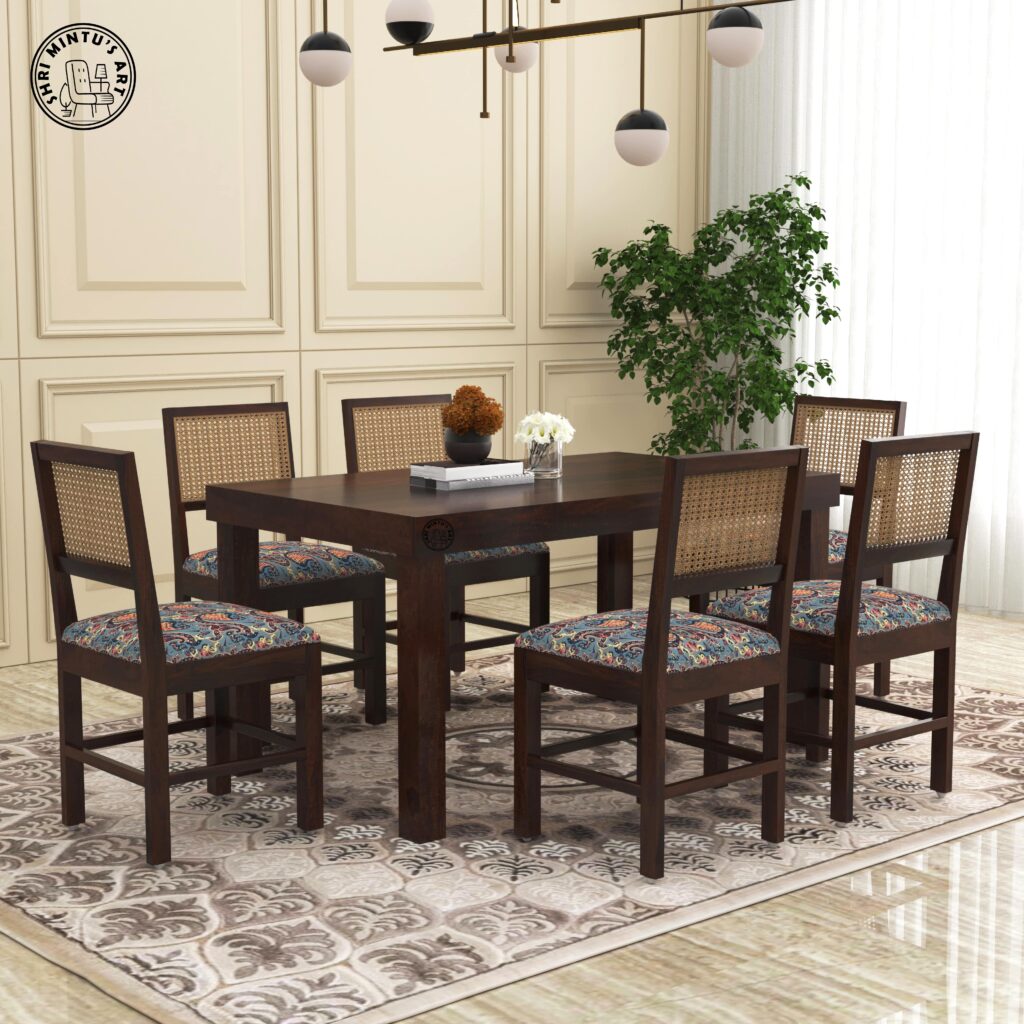
Furniture Design
Your table must represent the design style of your home.
- In upscale or contemporary spaces, seek out sleek lines, premium materials, or combinations of glass and metal.
- Minimalist environments frequently thrive with slender, sleek shapes in neutral shades
- Classic or country style homes might be more compatible with a sculpted, artisanal wooden dining table design style featuring warm hues and sturdy build.
Take into account the finish, material, and style of the legs as well—pedestal bases, for instance, provide more legroom, whereas trestle or four-legged tables might present a more traditional appearance.
By carefully considering the space, usage, shape, and style, you can select a dining table that not only fits your room but also enhances the overall dining experience—blending beauty, function, and comfort effortlessly.
What is the Standard Dining Table Height?
The usual height of dining room tables is generally between 28 to 30 inches (71 to 76 cm) from the ground to the top of the table. This enables cozy seating with the majority of wooden chair for dining table sets and offers sufficient leg space.
Table Height Classifications:
- Standard Height: 28–30 inches – Typically seen as the most comfortable and convenient for everyday use. This is the standard dining table height.
- Counter Height: 34–36 inches – Perfect for casual dining or kitchen islands.
- Bar Height: 40–42 inches – Ideal for small or social spaces.
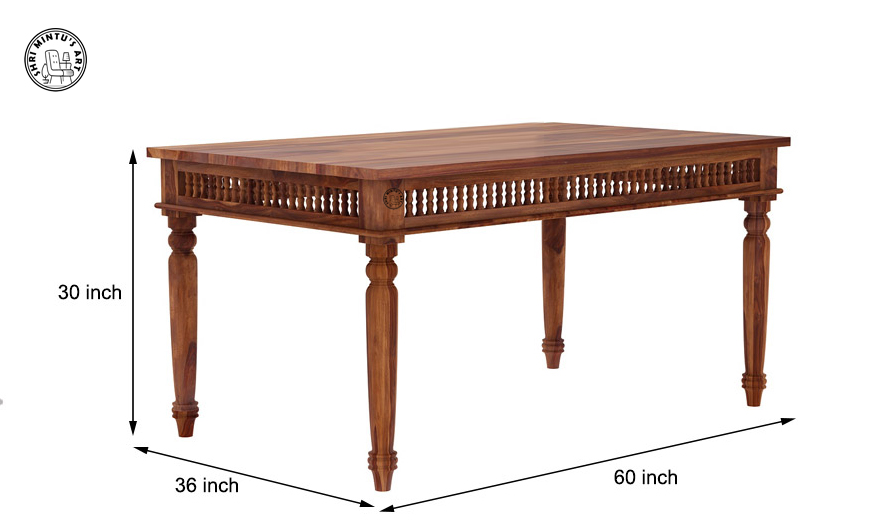
Dining Table Size & Seating Chart
| Table Shape | Seating Capacity | Recommended Dimensions | Standard Height |
| Rectangular | 4 | 48″–60″ L x 30″ W | 28″–30″ |
| Rectangular | 6 | 60″–72″ L x 36″ W | 28″–30″ |
| Rectangular | 8 | 72″–96″ L x 36″–40″ W | 28″–30″ |
| Round | 4 | 36″–44″ Diameter | 28″–30″ |
| Round | 6 | 48″–60″ Diameter | 28″–30″ |
| Square | 4 | 36″–44″ each side | 28″–30″ |
| Square | 6 | 48″–54″ each side | 28″–30″ |
| Counter Height | 4–6 | 36″–48″ L (varies by shape) | 34″–36″ (Counter height) |
| Bar Height | 2–4 | Small tables or narrow tops | 40″–42″ (Bar height) |
Standard Chair Height for Dining Tables
To match dining tables of various heights, chair seat heights also vary accordingly. Choosing the right wooden chair for dining table enhances comfort and posture while dining.
| Table Type | Table Height | Recommended Chair Seat Height |
| Standard Dining | 28–30 inches | 17–19 inches |
| Counter Height | 34–36 inches | 24–26 inches |
| Bar Height | 40–42 inches | 28–30 inches |
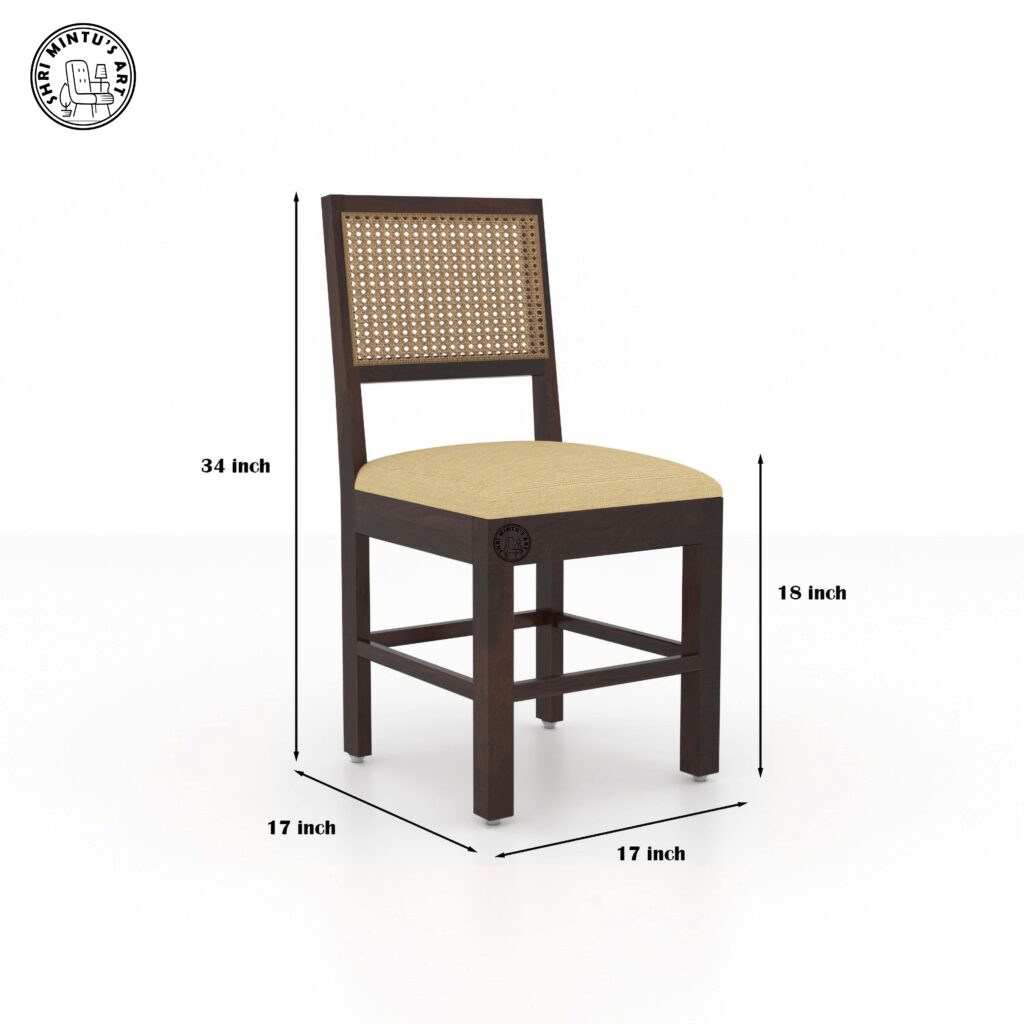
Pro Tip: Leave about 10–12 inches of space between the top of the seat and the underside of the table for the best leg comfort.
Wooden dining chairs with cushioned seats or ergonomic backs not only provide support but also elevate the overall dining room décor.
How Do You Pick the Right Dining Table Height?
Selecting the appropriate height for a dining table relies on several practical and design considerations:
Comfort and Ergonomics
Ensure the table supports a relaxed seated position. An ideal gap of 10–12 inches between the tabletop and seat allows for proper leg movement and elbow room. This arrangement allows guests to enjoy longer meals without feeling uncomfortable.
Compatibility of Chairs
Make sure the chairs you currently own (or intend to purchase) match the table appropriately. A wooden dining table chair with an 18 inch seat height pairs effectively with a table that is 30 inches tall. Aligning chair and table heights improves comfort and preserves visual cohesion.
Every height caters to a distinct lifestyle—so select according to the primary use of the space.
Style Choices
Contemporary dining areas may favor minimalist counter height tables, whereas traditional or rustic environments typically opt for standard height wooden sets. The height can also affect the perception of openness or intimacy in a space, serving as a subtle but impactful design factor.
Aligning table height with comfort, utility, and room arrangement results in a more pleasant dining experience- both aesthetically and functionally. An appropriately selected table height provides harmony, guarantees convenience, and enhances the overall appearance of your dining space.
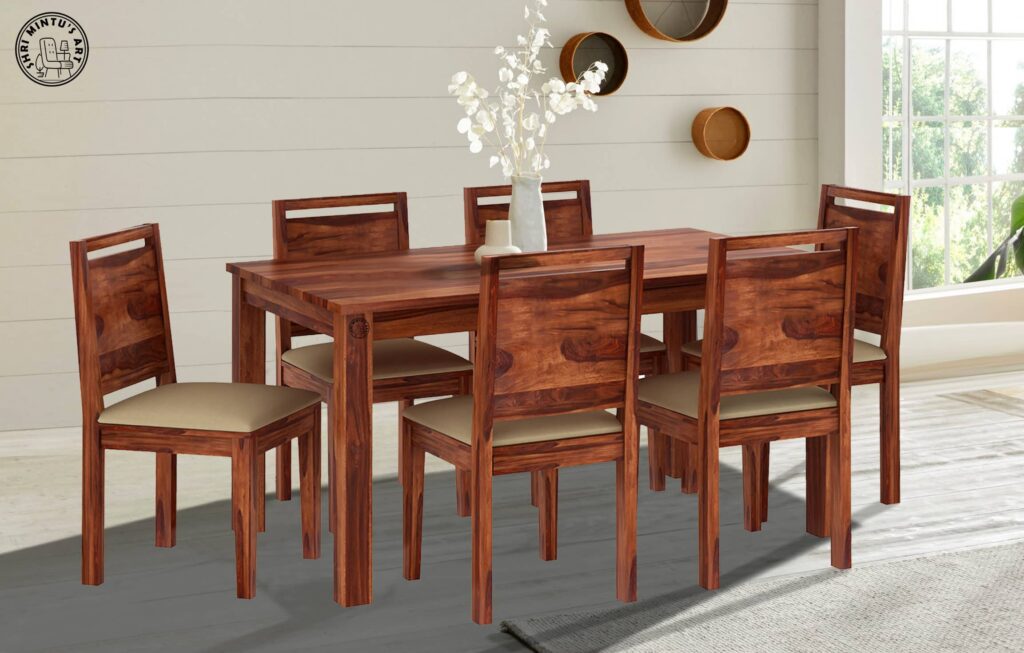
Conclusion
Selecting the appropriate dining table height, size, and chair height can elevate your dining area from average to extraordinary. Whether you require a dining room table that seats 6 or a smaller arrangement, maintaining proper proportions guarantees comfort and sophistication.
Discover selected choices in wooden dining table design and wooden chairs for dining table sets that merge elegance with durability designed to fit your lifestyle and home decor. Explore the latest design of wooden dining table set collections at Shrimintus Art to find the perfect match for your space.


